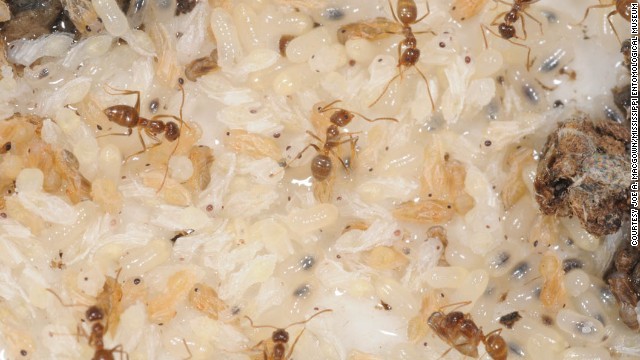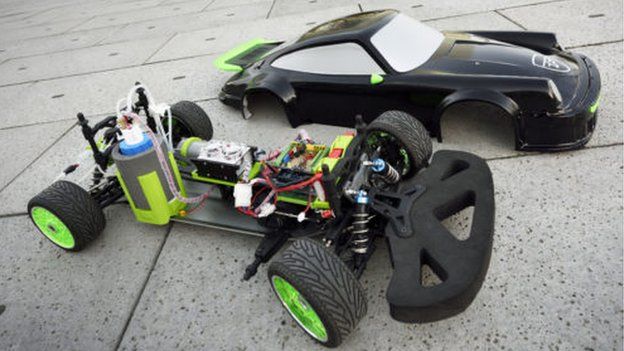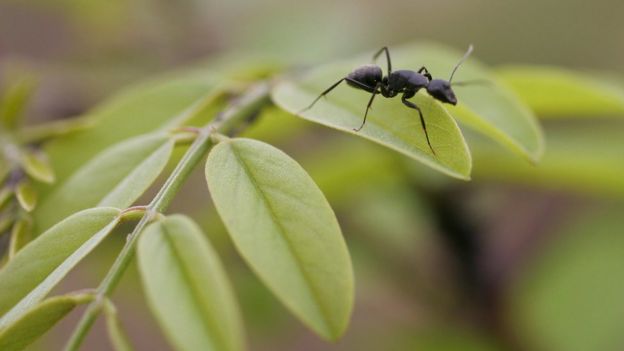manu1959
Left Coast Isolationist
see all yall tomorrow............
Follow along with the video below to see how to install our site as a web app on your home screen.

Note: This feature currently requires accessing the site using the built-in Safari browser.
Beware the "crazy ants." Researchers at the University of Texas are warning that the invasive species from South America has the potential to change the ecological balance in the southeastern United States, largely because the ants can wipe out colonies of what's been widely considered the insect villain of the region, the fire ant.
The crazy ants, officially called "Tawny crazy ants," are omnivores that can take over an area by both killing what's there and starving out what they don't kill, said Ed LeBrun, a research associate with the Texas invasive species research program at the Brackenridge Field Laboratory in the College of Natural Sciences. "Perhaps the biggest deal is the displacement of the fire ant, which is the 300-pound gorilla in Texas ecosystems these days," LeBrun said in a press release. "The whole system has changed around fire ants. Things that can't tolerate fire ants are gone. Many that can have flourished. New things have come in. Now we are going to go through and whack the fire ants and put something in its place that has a very different biology. There are going to be a lot of changes that come from that."

The crazy ants nest in walls, crawl spaces, house plants or empty containers in the yard, researchers said.
Beyond the troubles they cause for the environment, the crazy ants can be a big headache for people because their populations are so dense, LeBrun said. The crazy ants nest in walls, crawl spaces, house plants or empty containers in the yard, researchers said. "They don't sting like fire ants do, but aside from that they are much bigger pests," he said. "There are videos on YouTube of people sweeping out dustpans full of these ants from their bathroom. You have to call pest control operators every three or four months just to keep the infestation under control. It's very expensive."
The crazy ants are going so crazy, in fact, that some people want their fire ants back, LeBrun said. "Fire ants are in many ways very polite. They live in your yard. They form mounds and stay there, and they only interact with you if you step on their mound," he said.
More 'Crazy ants' a threat in southern U.S. - CNN.com
Now, unlikely heroes may be coming to the rescue to prevent similar tragedies: sugar-craving honeybees. Croatian researchers are training them to find unexploded mines littering their country and the rest of the Balkans. When Croatia joins the European Union on July 1, in addition to the beauty of its aquamarine Adriatic sea, deep blue mountain lakes and lush green forests, it will also bring numerous un-cleared minefields to the bloc's territory. About 750 square kilometers (466 square miles) are still suspected to be filled with mines from the Balkan wars in the 1990s.
Nikola Kezic, an expert on the behavior of honeybees, sat quietly together with a group of young researchers on a recent day in a large net tent filled with the buzzing insects on a grass field lined with acacia trees. The professor at Zagreb University outlined the idea for the experiment: Bees have a perfect sense of smell that can quickly detect the scent of the explosives. They are being trained to identify their food with the scent of TNT. "Our basic conclusion is that the bees can clearly detect this target, and we are very satisfied," said Kezic, who leads a part of a larger multimillion-euro program, called "Tiramisu," sponsored by the EU to detect land mines on the continent.
Several feeding points were set up on the ground around the tent, but only a few have TNT particles in them. The method of training the bees by authenticating the scent of explosives with the food they eat appears to work: bees gather mainly at the pots containing a sugar solution mixed with TNT, and not the ones that have a different smell. Kezic said the feeding points containing the TNT traces offer "a sugar solution as a reward, so they can find the food in the middle." "It is not a problem for a bee to learn the smell of an explosive, which it can then search," Kezic said. "You can train a bee, but training their colony of thousands becomes a problem."
MORE

They are young and clever, and they want to change the world - one bus at a time. "We've created the world's first bus that runs on formic acid, which is a much cheaper solution than hydrogen, yet it delivers the same environmental benefits," says Lucas van Cappellen from Team Fast, a spin-off company from Eindhoven University of Technology in the Netherlands. "We're building our own future."

Team Fast sitting in front of their prototype bus that runs on formic acid
Around 40 of his fellow students are endeavouring to develop emissions-free transport that will help in the global battle against climate change. And they're also trying to create careers for themselves. Formic acid is found in nature, delivered in the stings and bites of ants and other insects - the Latin word for ant is formica. And this simple carboxylic acid (chemical formula HCOOH) is already used in textiles and leather processing, as a livestock feed preservative, and is also found in some household limescale removers.

Team Fast tested its concept in a one-metre length model car
But Team Fast has found a way the acid can efficiently carry the ingredients needed for hydrogen fuel cells, used to power electric vehicles. The fuel, which the team has dubbed hydrozine (not to be confused with hydrazine), is a liquid, which means you can transport it easily and refill vehicles quickly, as with conventional fuels. The difference is that it is much cleaner. "The tailpipe emissions are only CO2 and water," explains Mr van Cappellen. "No other harmful gases like nitric oxides, soot or sulphuric oxides are emitted."

Some types of ant squirt formic acid as a defence mechanism
To prove the concept in the real world, an electric bus is set to hit the road in the Netherlands later this year, where it will shuttle between running on conventional bus routes and appearing at promotional events and industry fairs. The bus has an electric drive system, developed by bus builder VDL, that receives additional power from the formic acid fuel cell system mounted in a range-extender trailer, towed behind. "Our tank is around 300 litres, so we will extend the range of the bus by 200km (180 miles). However, we could of course make the tank bigger very easily," says Mr van Cappellen.
MORE